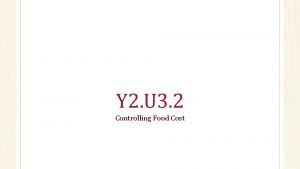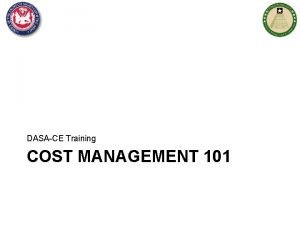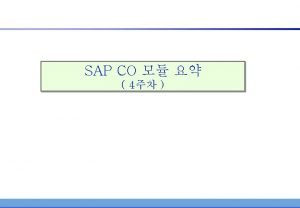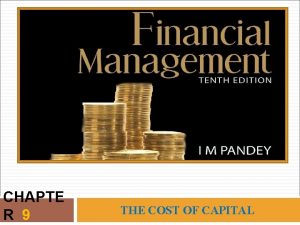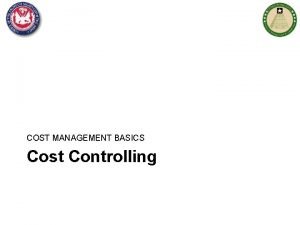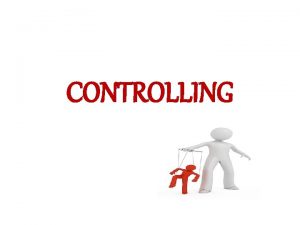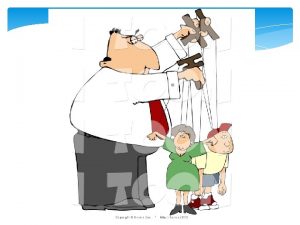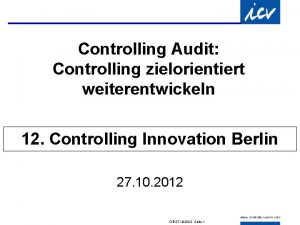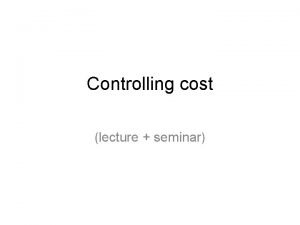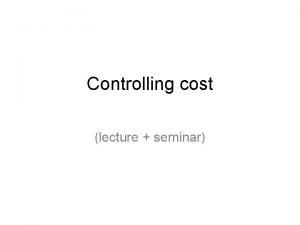Y 2 U 3 2 Controlling Food Cost
















- Slides: 16

Y 2. U 3. 2 Controlling Food Cost

Questions • What are the steps in the food flow process? • How is food cost determined? • How is food cost percentage determined? • How are standard portion costs established? • What is the difference between AP and EP cost? • What is a recipe yield? • What tools can be used in controlling portion? • How can an operation monitor food production and cost? • What methods can be used to price a menu?

Flow of food • Establish control during all 7 stages 1. Purchasing: Establishing good quality standards is essential in acquiring and producing consistent top-quality product. 2. Receiving: Trained management and staff ensuring quality standards 3. Storage: Monitor units and what’s in them 4. Issuing: Inventory control, record keeping (selling/theft) 5. Preparation: product used to fullest, exact specs 6. Cooking: Cooked and portioned correctly 7. Service: Good service, orders taken correctly

Determine Food Cost (Opening inventory + purchases = total food available) – Closing inventory = Total food cost Some refine by subtracting employee meals, comps, food transfer to other location • Food Cost: the actual dollar value of the food used by an operation during a certain period of time • It includes the cost incurred when a food is consumed for any reason: sold, given away, wasted spoiled, incorrectly prepped, overportioned, overproduced, pilfered

Determine Food Cost Percentage Total food cost / Sales =Food cost percentage • Food Cost Percentage is the relationship between sales and the cost of food • Usually determined by management • Often compared to company/industry standards, or historical costs • The relationship becomes unbalanced when cost controls are not followed

Standard Portion Costs • For each standardized recipe, establish a standard portion cost (exact amount each serving should cost) • A recipe cost card should exist for every multipleingredient item on the menu 27#- 2. 83 profit 26#- 2. 78 profit 25#- 2. 73 profit. 10 x 50 x 6 x 50=1500 x 20=$30, 000 yr.

AP/EP AP EP • “As purchased” • “Edible portion” • Price/product before accounting for trim and waste • Price/product after accounting for trim and waste • ? “ 10 pounds of onion, diced” • ? “ 10 pounds of diced onion” • Ultimately easiest and most exact way • Adjust price: /yp

Recipe Yields Determine recipe yield: Convert recipe yield: 1. Calculate total yield of recipe (weight or volume) CF = D/O 2. Weigh or measure major ingredients 3. Take cooking loss into account 4. Divide total volume by portion size Conversion factor = desired yield / original yield

Portion Control Tools • Scoops • Ladles • Serving spoons • Serving dishes • Ramekins, bowls, cups • Portion scales • Accurate preparation

Monitoring Production Volume and Cost • How much to make? Goldilocks • Food Production Chart- shows how much product should be produced by the kitchen during a given meal period • Production Sheet- lists all menu items being prepared for a given date • Sales History- record of number of portions of every item sold on a menu • Records serve as a basis for a sales history used to forecast future sales and production

Production Sheet

Menu Pricing • Menu is the primary sales tool • Should reflect overall cost of running operation • • • Purchase Prepare Serve Labor Rent Utilities

Contribution Margin Method • Contribution Margin is the portion of dollars a menu item contributes to overall profits • This method represents a menu items profits in relation to its portion size • Gross food sales – cost of food = Gross profit or Total Contribution Margin / number of customers • 100, 000 – 40. 000 = 60, 000 / 30, 000 = $2. 00 contributed to overhead and profit

Straight Mark-up Method • Multiply raw food cost by a pre-determined fraction • $0. 63 x 2/3 = $0. 42 • $0. 42 + $0. 63 =$ 1. 05

Average Check Method • Total revenue is divided by the number of seats, average seat turnover, and days open in one year • Gives an idea of the price range of items • Use this range, along with approximate food cost percentage to determine selling price

Food Cost Percentage Method • Item cost / Food Cost Percentage = Price • 1. 2185 /. 3046 = $4. 00
 Controlling food cost
Controlling food cost Gfebs cost management definition
Gfebs cost management definition Cost object controlling
Cost object controlling Unit 2 food food food
Unit 2 food food food Food chain sequence
Food chain sequence Cost accumulation and cost assignment
Cost accumulation and cost assignment Cost accumulation and cost assignment
Cost accumulation and cost assignment Manufacturing cost vs non manufacturing cost
Manufacturing cost vs non manufacturing cost Process costing vs job costing
Process costing vs job costing Wacc example
Wacc example Controllable costs
Controllable costs Cost pools
Cost pools Manufacturing cost vs non manufacturing cost
Manufacturing cost vs non manufacturing cost The formula for usage variance is (aq - sq) * sp.
The formula for usage variance is (aq - sq) * sp. Flotation cost in cost of equity
Flotation cost in cost of equity What is a period cost on the income statement
What is a period cost on the income statement Cost control and cost reduction difference
Cost control and cost reduction difference
